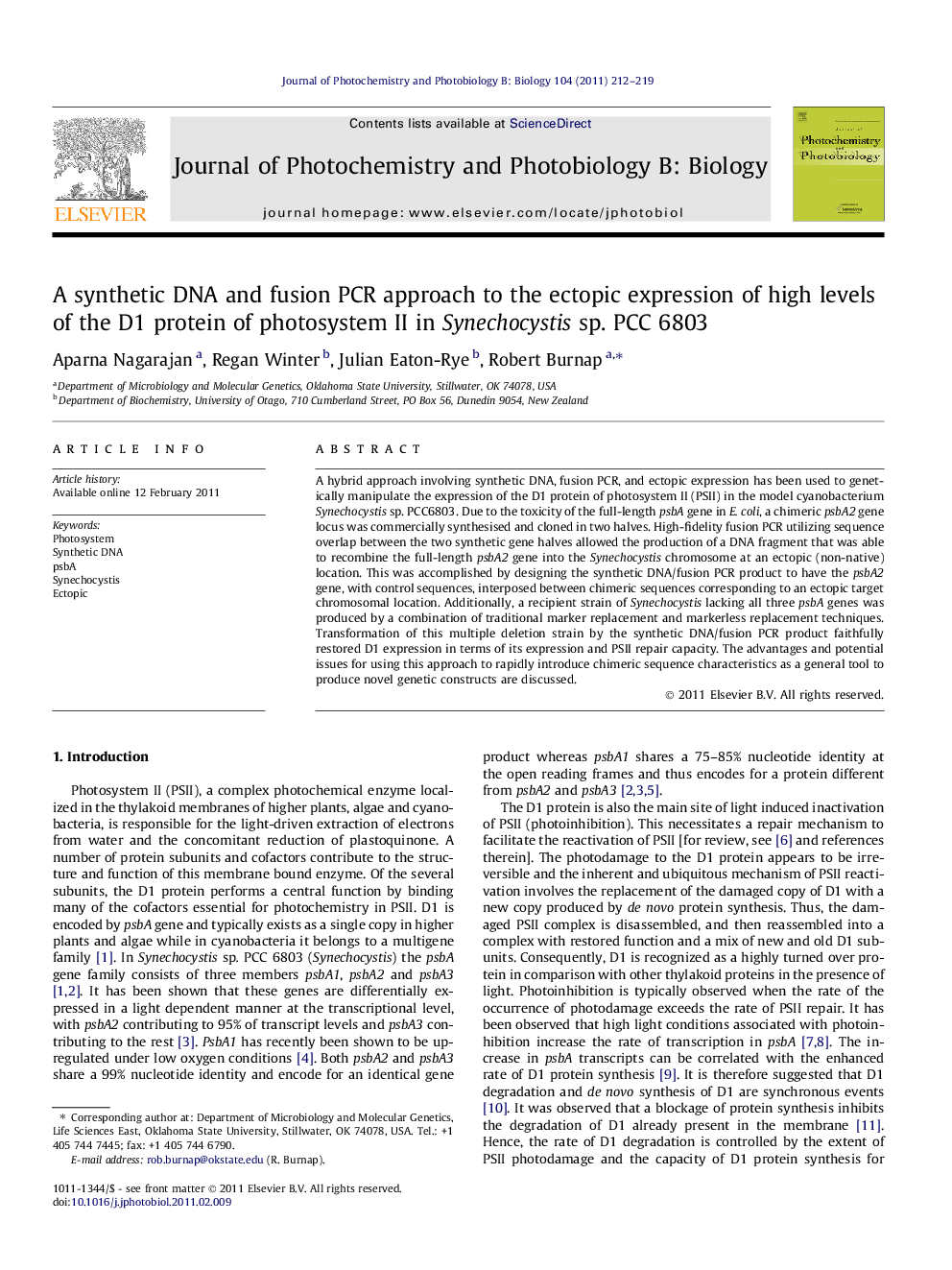| Article ID | Journal | Published Year | Pages | File Type |
|---|---|---|---|---|
| 29627 | Journal of Photochemistry and Photobiology B: Biology | 2011 | 8 Pages |
A hybrid approach involving synthetic DNA, fusion PCR, and ectopic expression has been used to genetically manipulate the expression of the D1 protein of photosystem II (PSII) in the model cyanobacterium Synechocystis sp. PCC6803. Due to the toxicity of the full-length psbA gene in E. coli, a chimeric psbA2 gene locus was commercially synthesised and cloned in two halves. High-fidelity fusion PCR utilizing sequence overlap between the two synthetic gene halves allowed the production of a DNA fragment that was able to recombine the full-length psbA2 gene into the Synechocystis chromosome at an ectopic (non-native) location. This was accomplished by designing the synthetic DNA/fusion PCR product to have the psbA2 gene, with control sequences, interposed between chimeric sequences corresponding to an ectopic target chromosomal location. Additionally, a recipient strain of Synechocystis lacking all three psbA genes was produced by a combination of traditional marker replacement and markerless replacement techniques. Transformation of this multiple deletion strain by the synthetic DNA/fusion PCR product faithfully restored D1 expression in terms of its expression and PSII repair capacity. The advantages and potential issues for using this approach to rapidly introduce chimeric sequence characteristics as a general tool to produce novel genetic constructs are discussed.
Research highlights► Expression of the D1 protein from non-native chromosomal location designed. ► Synthetic DNA and fusion PCR produced chimeric psbA2 gene locus. ► Recipient strain of Synechocystis lacks all psbA genes. ► Synthetic product faithfully restored D1 expression and PSII repair capacity. ► Use as a general tool to produce novel genetic constructs discussed.
